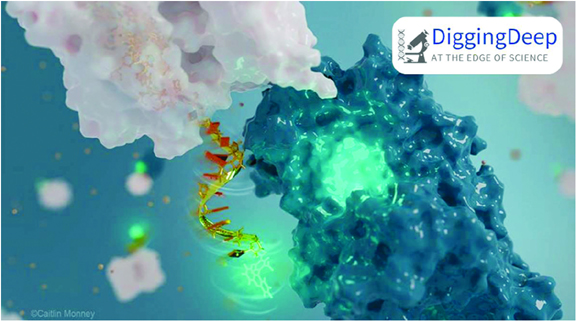One of the main innovations of these nanoantennas is that the receiver part of the antenna (bright green) is also employed to sense the molecular surface of the protein (CAITLIN MONNEY)
A team of researchers at the University of Montreal have developed a nanoantenna made of DNA (nucleic acid) and polyethylene glycol (PEG) to study changes in the structure of protein molecules. These fluorescent nanoantenna offer a distinct advantage over the fluorescent dyes that are ubiquitously used in biotechnology. The latter ‘display a low affinity for proteins’, while these nanoantennae are able to detect even the most minute of changes. The dye in the nanoantenna has an affinity to a specific region of a protein, which is contingent on the structure and chemistry of the protein. The antenna also performed well when used for examining enzyme kinetics i.e. the speed at which a reaction progresses in the presence of an enzyme. It also remained stable at higher temperatures. The findings were published last month in Nature Methods. The team explained that the nanoantenna works like a two-way radio that can both receive and transmit radio waves. It receives light in one wavelength, and depending on the protein changes it senses, it transmits light in another colour and this can be detected and studied.
“In addition to helping us understand how natural nanomachines function or malfunction, consequently leading to disease, this new method can also help chemists identify promising new drugs as well as guide nano engineers to develop improved nanomachines,” Dominic Lauzon, co-author of the study, said in a press release.
